In the vast tapestry of Hindu mythology, gods and their weapons are as intertwined as the threads of destiny. These divine weapons do not merely serve as tools of war and destruction, but are imbued with profound symbolism that reflects the very essence of their wielders. Each weapon tells a story, evokes certain emotions, and represents a web of mythical beliefs. Explore the remarkable significance and symbolic nature of gods’ weapons in Hindu mythology as we journey through the realms of gods and mortals, unraveling the mysteries that lie within the Trident of Lord Shiva, the Discus of Lord Vishnu, the Bow and Arrow of Lord Rama, and many more.
Contents
- Significance of Weapons in Hindu Mythology
- Weapons of Major Hindu Deities
- Weapons in Hindu Mythological Epics
- Symbolic Meanings of Gods’ Weapons
- Conclusion
-
Frequently Asked Questions
- What are the weapons called in Hindu mythology?
- What is the purpose of gods’ weapons in Hindu mythology?
- Why do gods in Hindu mythology possess multiple weapons?
- Can humans use the weapons of gods in Hindu mythology?
- Do the gods’ weapons have special abilities?
- Are the weapons in Hindu mythology only used for warfare?
- What happens if a god loses their weapon in Hindu mythology?
- Do all gods in Hindu mythology possess weapons?
- Are there any weapons that are shared among multiple gods?
- Do the weapons in Hindu mythology have any historical or archaeological basis?
- References
-
Frequently Asked Questions
- 1. What is the significance of weapons in Hindu mythology?
- 2. Why do Hindu deities possess weapons?
- 3. What is the symbolism behind the trident of Lord Shiva?
- 4. What does the discus of Lord Vishnu symbolize?
- 5. What is the significance of Lord Rama’s bow and arrow?
- 6. What does Lord Hanuman’s mace symbolize?
- 7. What is the significance of Lord Murugan’s powerful spear?
- 8. What does Lord Indra’s thunderbolt signify?
- 9. What is the symbolism behind Lord Krishna’s conch shell?
- 10. How do the weapons of Hindu gods embody cosmic forces?
- References
- Read More
Significance of Weapons in Hindu Mythology
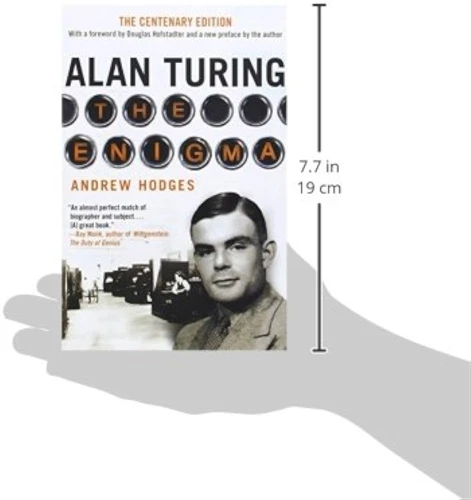
The significance of weapons in Hindu mythology is profound and multifaceted. These weapons play a pivotal role in the divine narratives, serving as extensions of the gods themselves and embodying their attributes and powers. The gods’ weapons are not mere tools of destruction but serve higher purposes tied to cosmic forces and divine principles. They represent the balance between good and evil, creation and destruction, and are instrumental in maintaining order in the universe. Each weapon carries its own symbolism and meaning, reflecting the unique characteristics of the deity who wields it. The weapons act as a conduit for the gods’ energies and are used to protect, cleanse, and restore harmony in the world. Through their weapons, the deities assert their dominion and invoke awe and reverence from mortals, reminding them of the divine forces that shape their existence. The symbolic nature of these weapons extends beyond the physical form, reaching into the realms of mythology, philosophy, and spirituality. Understanding the significance of these weapons allows us to delve deeper into the intricate tapestry of Hindu mythology, where every aspect is infused with meaning and purpose.
The Role of Gods’ Weapons
The role of gods’ weapons in Hindu mythology is multifaceted and integral to the narratives of the deities. These weapons serve as powerful extensions of the gods themselves, enabling them to fulfill their divine duties and maintain cosmic order. The gods’ weapons embody their unique attributes and powers, reflecting their roles as protectors, creators, and destroyers. The weapons act as tools of war, enabling the gods to combat the forces of evil and maintain balance in the universe. They are also instruments of transformation, symbolizing the transition from one state to another. The gods’ weapons represent the gods’ authority and sovereignty over the mortal realm. When wielded by the deities, these weapons inspire awe and command respect from both mortals and other celestial beings. The role of gods’ weapons in Hindu mythology goes beyond their physical functionality; they are conduits for divine energies and serve as reminders of the gods’ immense power and purpose. Understanding the significance of gods’ weapons offers a glimpse into the intricate cosmology and symbolism within Hindu mythology.
The Symbolic Nature of Weapons
The symbolic nature of weapons in Hindu mythology goes far beyond their physical form. These weapons embody a deeper meaning and serve as metaphors for various aspects of life, spirituality, and cosmic forces. They represent the power and potency of the gods, acting as reminders of their supreme authority and ability to shape the universe. Each weapon holds its own unique symbolism, reflecting the qualities and attributes associated with the deity who wields it. For example, the Trident of Lord Shiva symbolizes the three fundamental aspects of existence – creation, preservation, and destruction. It represents the cyclical nature of life, the balance between forces, and the transformative power of destruction and rebirth. The Discus of Lord Vishnu, known as the Sudarshan Chakra, represents the eternal cycle of time and the power of righteousness. It signifies the ability to cut through illusions and ignorance, bringing clarity and enlightenment. The Bow and Arrow of Lord Rama symbolize discipline, focus, and the pursuit of righteousness. They represent the path of dharma and the ability to overcome obstacles through skill and determination. These weapons serve as visual metaphors, capturing complex ideas and philosophies within a singular object. They invite contemplation and serve as reminders of the profound truths embedded within the fabric of Hindu mythology. Through their symbolic nature, these weapons transcend the realm of physical combat, becoming gateways to deeper spiritual understanding and cosmic truths. They connect mortals to the divine realm, offering glimpses into the profound mysteries that govern existence. Understanding the symbolic nature of these weapons unveils layers of meaning and invites us to explore the rich tapestry of Hindu mythology where every symbol carries significance and evokes contemplation.
Weapons of Major Hindu Deities
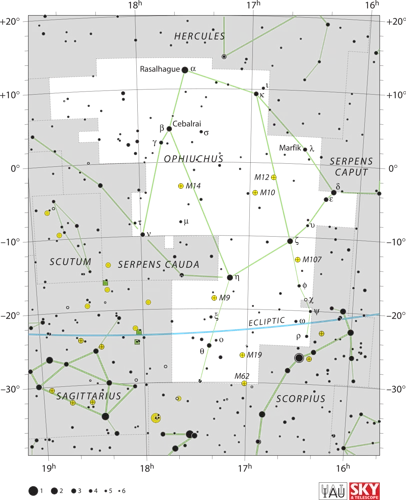
The major Hindu deities are renowned for their formidable weapons, each with its own distinct symbolism and purpose. Lord Shiva wields the Trident, also known as the trishula, which consists of three prongs representing the three aspects of existence – creation, preservation, and destruction. It symbolizes Shiva’s control over time, his ability to dissolve the cosmic cycles and bring about transformation. Lord Vishnu carries the Discus, known as the Sudarshana Chakra, which represents his power to annihilate evil forces and protect righteousness. The circular shape signifies the eternal nature of the universe, and its sharp edges symbolize Vishnu’s ability to cut through ignorance and illusion. Lord Rama, the seventh incarnation of Vishnu, wields the Bow and Arrow, known as the Dhanushyastra. The bow signifies concentration and focus, while the arrows represent determination and righteousness. Lord Hanuman, the devoted servant of Rama, carries the Mace, known as the Gada. The mace symbolizes Hanuman’s immense strength and unwavering loyalty. It is also seen as a symbol of righteousness, justice, and protection. Each of these weapons is inseparable from the deities, representing not only their power, but also their specific qualities and roles in the cosmic order.
The Trident of Lord Shiva
The Trident of Lord Shiva is a symbol of divine power and cosmic energy. Known as the Trishula, this three-pronged weapon holds immense significance in Hindu mythology. Each prong represents a fundamental aspect of existence—creation, preservation, and destruction. The central prong symbolizes Sattva (harmony and balance), the left prong represents Rajas (activity and dynamism), and the right prong represents Tamas (darkness and dissolution). The trident is also associated with Lord Shiva’s role as the destroyer of ignorance and illusion, breaking the cycle of birth and death. It is believed that the three prongs of the Trident represent the trinity of gods—Brahma, Vishnu, and Shiva. The Trishula also holds a connection to the celestial realms, as it is said to resemble the constellation Orion, specifically the Orion Nebula. This celestial link further emphasizes the cosmic power and influence of Lord Shiva. The Trident serves as a reminder of the eternal cycle of life, death, and rebirth, and the need for transformation and transcendence. Whether in art, sculptures, or prayers, the Trident of Lord Shiva is a potent symbol that captures the essence of his role as the ultimate destroyer and creator of the universe. (Link: /understanding-orion-nebula/)
The Discus of Lord Vishnu
The Discus, also known as the Sudarshana Chakra, is a prominent weapon associated with Lord Vishnu, the preserver and sustainer of the universe in Hindu mythology. This circular weapon, resembling a spinning disc or a serrated wheel, symbolizes the power and authority of Lord Vishnu. The Discus is believed to possess immense speed and precision, capable of cutting through any obstacle or evil force. It represents the divine attribute of ‘Chakravartin’ or the cosmic ruler who maintains harmony and order. According to legends, the Discus was created from the cosmic materials of the universe by the gods themselves, and it holds the energy and consciousness of Lord Vishnu. It is often depicted as radiating bright light, signifying divine knowledge and enlightenment. The Discus is not only a weapon of destruction but also a tool of protection. It serves as a shield for the virtuous and a deterrent for the wicked. Its swift rotation symbolizes the cycle of life, death, and rebirth, reflecting Lord Vishnu’s role as the preserver and eternal guardian. The Discus also signifies the cosmic order and the never-ending cycle of time and existence, reminding devotees of the impermanence of the material world. Through its potent symbolism, the Discus of Lord Vishnu reminds us of the eternal nature of the divine and the balance between cosmic forces.
The Bow and Arrow of Lord Rama
The Bow and Arrow of Lord Rama hold great significance in Hindu mythology. This divine weapon represents Lord Rama’s valor, precision, and unwavering focus. The bow, known as the Pinaka, symbolizes both power and control. It is said to be crafted by Lord Vishwakarma, the divine architect, making it a weapon of divine origin. The bow’s formidable strength embodies Rama’s ability to overcome adversity and protect righteousness. The arrow, on the other hand, represents the directed force of Lord Rama’s intention. It is said that when Rama released an arrow, it would always hit its intended target, showcasing his exceptional aim and accuracy. Lord Rama’s bow and arrow together exemplify his mastery in combat and his commitment to upholding dharma, the righteous path. Through this weapon, Rama demonstrates his ability to defend the innocent, defeat evil forces, and restore balance in the cosmos. The Bow and Arrow of Lord Rama serve as powerful symbols of courage, determination, and the unwavering pursuit of truth and justice in Hindu mythology.
The Mace of Lord Hanuman
The Mace of Lord Hanuman holds great significance in Hindu mythology. Known as the “Gada,” this weapon is traditionally depicted as a mighty mace, capable of immense power and strength. Lord Hanuman, the monkey god revered for his unwavering devotion to Lord Rama, wields the Gada as a symbol of his incredible abilities and unwavering determination. The mace represents Lord Hanuman’s physical strength and his ability to vanquish evil forces with one mighty blow. It serves as a reminder of his loyalty and service to Lord Rama, as well as his role as a protector of righteousness. The Gada’s formidable presence in Lord Hanuman’s hands serves as a powerful symbol of authority and protection, instilling fear in the hearts of his enemies and inspiring devotion in his devotees. With his mighty mace, Lord Hanuman stands as a beacon of hope, a defender of righteousness, and a symbol of unwavering devotion. The Mace of Lord Hanuman not only represents the physical prowess of this beloved deity but also embodies the inner power and determination that all devotees can aspire to achieve, making it a cherished symbol in Hindu mythology.
Weapons in Hindu Mythological Epics
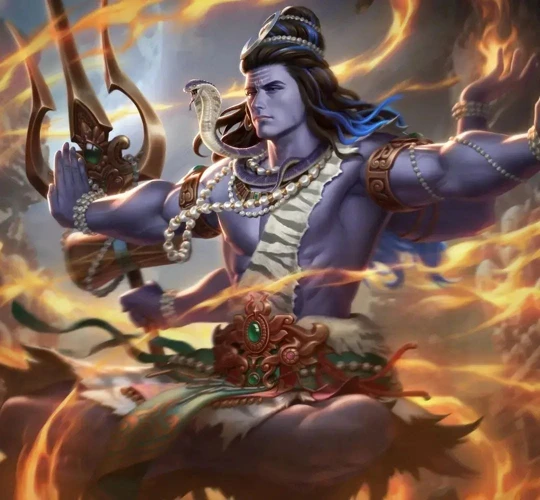
Weapons in Hindu mythological epics hold a prominent place, driving the narratives forward and showcasing the might and valor of the deities. One such weapon is the powerful spear of Lord Murugan, also known as the Vel. This divine weapon is associated with the deity’s role as the commander of the celestial army and represents his unwavering determination and piercing intellect. The Vel serves as a symbol of the eradication of evil forces and ignorance. Another notable weapon is the thunderbolt, known as the Vajra, wielded by Lord Indra, the king of gods. The Vajra’s powerful strikes symbolize Indra’s supremacy and his ability to overcome adversaries and protect the universe from chaos. Lord Krishna, an incarnation of Lord Vishnu, carries the mighty Sudarshana Chakra, a spinning discus-like weapon. The Sudarshana Chakra embodies Lord Vishnu’s all-encompassing power and is a symbol of divine justice and order. It is believed to possess the ability to both protect the righteous and annihilate the forces of evil. The weapons in Hindu mythological epics not only contribute to the epic battles but also serve as reminders of the gods’ roles and responsibilities in maintaining cosmic harmony. Each weapon carries its unique symbolism, adding depth and richness to the mythological narratives that continue to captivate and inspire.
The Powerful Spear of Lord Murugan
The powerful spear of Lord Murugan, known as Vel, holds immense significance in Hindu mythology. The Vel is not merely a weapon; it is an embodiment of divine energy and represents Lord Murugan’s valor and power. This sacred spear is often depicted as a golden lance with a vel-shaped head, symbolizing Lord Murugan’s mastery over both physical and spiritual realms. The Vel is associated with protection, victory, and the dispelling of negative forces. In Hindu mythology, Lord Murugan is hailed as the God of War and Courage, and the Vel serves as his trusted weapon in battles against demons and evil forces. The spear’s sharpness and precision signify Lord Murugan’s piercing insight and ability to discern truth from falsehood. Additionally, the Vel is believed to be a tool of transformation and purification. It is said that the mere sight of the Vel can rid devotees of afflictions and grant them spiritual upliftment. The Vel’s significance extends beyond mythology, as it serves as an emblem of passion, determination, and the triumph of good over evil. Through the powerful spear of Lord Murugan, we are reminded of the strength and courage within ourselves, and the ability to overcome obstacles with unwavering resolve.
The Thunderbolt of Lord Indra
The Thunderbolt, known as Vajra, is the formidable weapon wielded by Lord Indra, the king of gods and the ruler of the heavens. This ancient and powerful weapon holds immense significance in Hindu mythology. The Thunderbolt represents Indra’s authority and invincibility, symbolizing his ability to command thunder, lightning, and storms. It is believed to be made of a rare and indestructible metal, allowing it to overcome any obstacle or enemy in its path. The Thunderbolt is not only a weapon of destruction but also a symbol of divine power and control over natural forces. When used by Lord Indra, it unleashes thunderous fury upon his foes, signifying the supremacy of the gods over the forces of chaos and darkness. The Thunderbolt’s vivid description in Hindu scriptures evokes a sense of awe and fear among mortals, showcasing the might and majesty of Lord Indra. Its formidable presence serves as a reminder of the deity’s cosmic role and the divine order he upholds. Just as the Thunderbolt is associated with storms that bring both destruction and renewal, Lord Indra’s weapon represents the cycles of creation, maintaining cosmic balance, and asserting the authority of the gods. To understand the true power and symbolism of the Thunderbolt, one must delve into the rich mythology that surrounds Lord Indra and his eternal battle against the forces of evil.
The Conch Shell of Lord Krishna
The Conch Shell of Lord Krishna holds great significance in Hindu mythology. Known as the “Panchajanya,” this divine conch shell is said to possess extraordinary power. It is often depicted as a symbol of victory, divine sound, and the eternal primordial sound of creation. In the epic Mahabharata, Lord Krishna blows the conch shell to signal the beginning of the Kurukshetra war, marking the righteous battle between good and evil. The sound of the Conch Shell represents the call to duty and righteousness, urging warriors to fight for justice and upholding dharma. This celestial conch shell is also associated with Lord Vishnu, of whom Lord Krishna is an incarnation. It is said that the Panchajanya conch shell was obtained during the churning of the cosmic ocean (Samudra Manthan). The vibrations emanating from the conch are believed to purify the surrounding environment and awaken divine consciousness. The sacred sound produced by the conch shell holds the power to dispel negative energies and bring inner calmness and spiritual awakening. In Hindu rituals and ceremonies, the Conch Shell is often blown to invoke blessings, purify space, and announce the presence of the divine. Its auspicious presence is considered a harbinger of positive energy, prosperity, and spiritual enlightenment. Through the symbolism of the Conch Shell, Lord Krishna teaches us the importance of using divine power for the greater good, reminding us of our duty to maintain cosmic order and uphold righteousness.
Symbolic Meanings of Gods’ Weapons
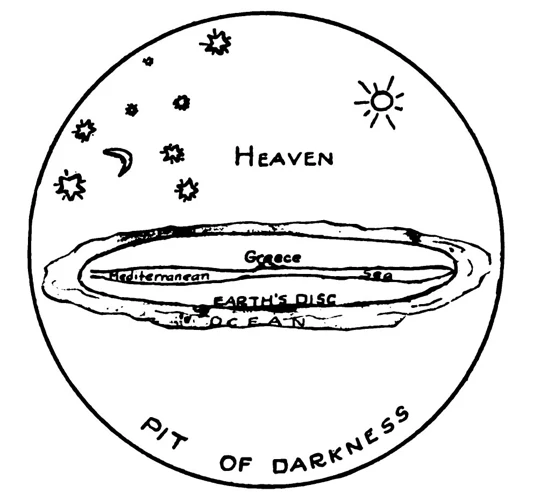
The gods’ weapons in Hindu mythology hold profound symbolic meanings that extend beyond their physical form. These weapons embody the divine attributes and cosmic forces associated with the deities who wield them. One of the key symbolic meanings is protection and destruction. The gods’ weapons serve as a means to protect the divine order and maintain cosmic harmony. They are wielded against evil forces and destructive entities, ensuring the balance between good and evil. These weapons also represent the duality of creation and destruction, highlighting the cyclical nature of existence. Another symbolic meaning is balance and transformation. The gods’ weapons signify the delicate equilibrium between opposing forces and the transformative power of the divine. They are often depicted as tools of change, capable of reshaping worlds and bringing about cosmic transformation. The weapons also embody the concept of divine justice and the restoration of balance when things go astray. Lastly, the gods’ weapons represent the divine attributes and cosmic forces. Each weapon reflects the specific qualities and abilities of the deity who wields it. For example, Lord Shiva’s Trident represents the three aspects of existence – creation, preservation, and destruction. They signify the forces of Brahma, Vishnu, and Shiva respectively. These symbolic meanings deepen our understanding of the gods’ weapons, providing insights into the complex realms of Hindu mythology and the intricate roles they play in the cosmic order.
Protection and Destruction
Protection and destruction are two intertwined aspects represented by the weapons in Hindu mythology. These weapons serve as tools for both safeguarding and annihilating, reflecting the duality inherent in the cosmos. The gods’ weapons are not solely instruments of war but are imbued with the power to protect the righteous and vanquish evil forces. They act as a shield, guarding the world against malevolent entities and ensuring the preservation of order and harmony. The weapons also possess the ability to bring destruction when necessary. They serve as a means to dismantle and annihilate chaos, restoring balance to the universe. This dual nature highlights the complex moral dimensions of the gods’ weapons, where protection and destruction are intertwined for the greater cosmic purpose. As mortals, we can draw lessons from this symbolism, understanding the need for both protection and destruction in our own lives. Sometimes, it is essential to let go of destructive aspects and create space for growth and transformation. The gods’ weapons remind us of the delicate equilibrium between preservation and elimination, and the eternal dance between creation and destruction that shapes our existence.
Balance and Transformation
Balance and transformation are inherent themes in the symbolism of weapons in Hindu mythology. The gods’ weapons represent the delicate equilibrium between opposing forces and the transformative power that emerges from this balance. These weapons serve as reminders of the eternal cosmic dance, where creation and destruction, light and darkness coexist harmoniously. For example, the Trident of Lord Shiva, known as the Trishula, embodies this concept. The three prongs of the trident symbolize the three fundamental qualities of existence: creation, preservation, and dissolution. It represents the cyclical nature of life, where transformation is an inevitable part of the cosmic order.
Similarly, the Bow and Arrow of Lord Rama reflect the idea of balance and transformation. Lord Rama’s bow, known as the Kodanda, symbolizes his unwavering focus and determination to bring balance and justice to the world. The arrows represent his ability to strike a perfect equilibrium between righteousness and action. This balance enables him to transform adversity into victory and restore harmony in the universe.
The symbolic significance of balance and transformation is also evident in the Discus of Lord Vishnu, known as the Sudarshana Chakra. This spinning disc represents the cyclical nature of time and the transformative power of Lord Vishnu’s interventions. The Discus is a potent weapon that annihilates evil forces and restores cosmic harmony. Its rotation symbolizes the perpetual cycle of creation, preservation, and dissolution, reinforcing the notion of balance and transformation inherent in Hindu mythology.
In Hindu mythology, the gods’ weapons embody the transformative forces at play in the universe. They represent the delicate equilibrium between opposing energies and the potential for change and growth. Just as the celestial bodies in the night sky dance in harmony, these weapons remind us of our own capacity for balance and transformation amidst the ever-changing cosmos. To delve deeper into the celestial dance, consider exploring the connection between astrology and balance in astro sign compatibility.
Divine Attributes and Cosmic Forces
In Hindu mythology, the weapons wielded by the gods represent not only their divine attributes but also the cosmic forces that govern the universe. Each weapon carries symbolic significance that reflects the unique qualities of the deity who wields it. For example, the Trident of Lord Shiva embodies his role as the destroyer and transformer. The three prongs of the trident symbolize the three gunas – Satva (purity), Rajas (activity), and Tamas (inertia) – representing the cyclical nature of existence. Lord Vishnu’s Discus, known as Sudarshan Chakra, represents his ability to preserve and protect righteousness. It signifies the eternal cycle of time and the cosmic order maintained by Vishnu. The Bow and Arrow of Lord Rama signify his unwavering focus and determination in upholding righteousness. The bow represents the mind, while the arrow represents the senses directed by a strong will. Lord Hanuman’s Mace symbolizes his immense strength and devotion, as well as the power to crush ignorance and obstacles in the path of spiritual evolution. These divine attributes and cosmic forces embodied in the gods’ weapons serve as reminders of the interconnectedness of the divine and human realms in Hindu mythology, where gods and mortals converge in their pursuit of higher truths and spiritual enlightenment. They inspire devotees to seek balance, harmony, and alignment with cosmic forces for growth and transformation. Understanding the symbolic meanings of these weapons unveils the deeper layers of wisdom embedded in Hindu mythology, inviting us to contemplate the cosmic mysteries and our place within the grand design of the universe.
Conclusion
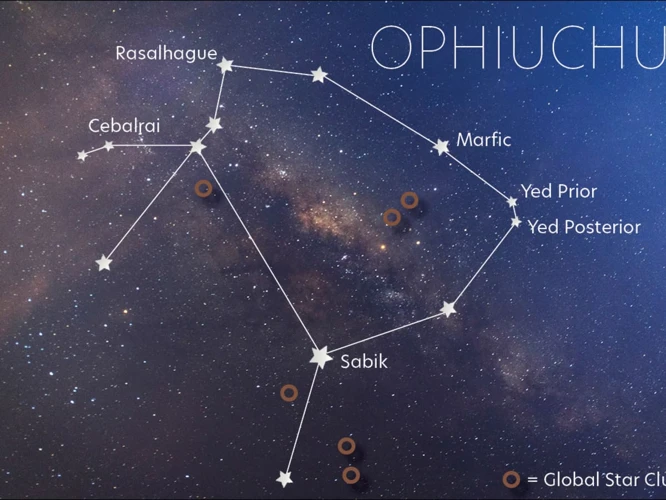
In Hindu mythology, the weapons of the gods hold immense significance. These weapons are not merely instruments of war, but rather symbols that embody complex meanings and cosmic forces. Through their weapons, the gods convey messages of protection, destruction, balance, and transformation. The Trident of Lord Shiva represents his power over creation, preservation, and destruction. The Discus of Lord Vishnu signifies his ability to maintain cosmic balance. The Bow and Arrow of Lord Rama symbolize his strength, focus, and divine purpose. The Mace of Lord Hanuman represents his loyalty, courage, and unwavering devotion. The Powerful Spear of Lord Murugan embodies his valor and determination. The Thunderbolt of Lord Indra symbolizes his authority and control over the forces of nature. The Conch Shell of Lord Krishna signifies divine communication and victory. These weapons are not only tools but extensions of the gods themselves, enabling them to fulfill their roles as protectors and maintainers of the universe. The symbolism of these weapons is deeply ingrained in Hindu culture and continues to inspire devotion and reverence. By delving into the significance of these weapons, we gain a deeper understanding of the rich mythology and spiritual beliefs of Hinduism. The gods’ weapons are symbols that connect us to the divine, reminding us of the profound forces that shape our world. As we explore the stories and meanings behind these weapons, we embark on a journey that reveals the depth and complexity of Hindu mythology. Through these divine narratives, we gain insights into the nature of existence, the interplay between good and evil, and the eternal dance of creation and destruction. The symbols wielded by the gods transcend time and space, resonating with timeless truths and universal principles. In this exploration of the significance of weapons in Hindu mythology, we discover that these sacred artifacts are not only objects of worship but gateways to understanding the divine mysteries that lie within.
Frequently Asked Questions

What are the weapons called in Hindu mythology?
The weapons in Hindu mythology are known as “astras” or “divyastras.” These divine weapons are said to possess immense power and are wielded by gods, goddesses, and heroes.
What is the purpose of gods’ weapons in Hindu mythology?
The purpose of gods’ weapons in Hindu mythology goes beyond mere physical combat. They serve as symbols of divine power, protection, and the cosmic forces. These weapons are used to maintain order, defeat evil, and restore balance in the universe.
Why do gods in Hindu mythology possess multiple weapons?
The multiple weapons possessed by gods in Hindu mythology symbolize their diverse attributes and abilities. It highlights their multidimensional nature and signifies their ability to handle various situations and challenges.
Can humans use the weapons of gods in Hindu mythology?
No, the weapons of the gods in Hindu mythology are considered divine and are meant exclusively for the gods or those granted their blessings. Mortals are not capable of wielding these weapons due to their immense power and the dangers they pose if mishandled.
Do the gods’ weapons have special abilities?
Yes, the weapons of gods in Hindu mythology often possess special abilities beyond their physical form. These abilities can include the ability to create illusions, control elements, bestow blessings, and even destroy entire worlds.
Are the weapons in Hindu mythology only used for warfare?
No, while weapons in Hindu mythology are indeed used for warfare and battles against demons or evil forces, their purpose extends beyond violence. These weapons are also used for protection, justice, and upholding righteousness.
What happens if a god loses their weapon in Hindu mythology?
The loss of a weapon by a god in Hindu mythology can be a significant event. It can weaken the god and potentially shift the balance of power. In some instances, gods have had to seek the help of mortals or perform penance to regain their lost weapons.
Do all gods in Hindu mythology possess weapons?
No, not all gods in Hindu mythology are associated with specific weapons. Some deities rely more on their divine attributes, such as wisdom, knowledge, or beauty, rather than having a specific physical weapon.
Yes, there are certain weapons that are shared among multiple gods in Hindu mythology. For example, the Sudarshana Chakra, a spinning discus, is associated with Lord Vishnu and Lord Krishna. Similarly, the Trident, known as Trishul, is wielded by both Lord Shiva and Goddess Durga.
Do the weapons in Hindu mythology have any historical or archaeological basis?
The weapons in Hindu mythology are primarily symbolic and are deeply rooted in ancient myths and legends. While some weapons may have historical or archaeological interpretations, their true essence lies in the realms of mythology, spirituality, and philosophical teachings.
References
Frequently Asked Questions

1. What is the significance of weapons in Hindu mythology?
The weapons in Hindu mythology hold great symbolic and practical importance. They represent the power, strength, and attributes of the gods, as well as their role in maintaining cosmic balance and protecting the world.
2. Why do Hindu deities possess weapons?
Hindu deities possess weapons as tools to fulfill their divine duties and responsibilities. These weapons are symbolic of their authority and power, enabling them to defeat evil forces, maintain cosmic order, and protect their devotees.
3. What is the symbolism behind the trident of Lord Shiva?
The trident, or trishula, of Lord Shiva represents his three fundamental powers: creation, preservation, and destruction. It symbolizes the cycle of life and death, as well as the control over the mind, body, and spirit.
4. What does the discus of Lord Vishnu symbolize?
The discus, or sudarshana chakra, of Lord Vishnu represents his divine authority and protection. It symbolizes the mind’s ability to discriminate between truth and illusion, and the power to eliminate negativity and obstacles.
5. What is the significance of Lord Rama’s bow and arrow?
Lord Rama’s bow and arrow symbolize his unrivaled courage, precision, and strength. They signify his determination to uphold righteousness, protect dharma (righteousness), and conquer the forces of evil.
6. What does Lord Hanuman’s mace symbolize?
Lord Hanuman’s mace, or gada, symbolizes his incredible strength and unwavering devotion. It represents his ability to crush ignorance, overpower negativity, and offer protection to his followers.
7. What is the significance of Lord Murugan’s powerful spear?
Lord Murugan’s spear, or vel, represents his divine knowledge and determination. It symbolizes his ability to pierce through ignorance and confusion, and guide his devotees towards spiritual enlightenment and victory over obstacles.
8. What does Lord Indra’s thunderbolt signify?
Lord Indra’s thunderbolt, or vajra, symbolizes his supreme power and authority. It represents the unstoppable force of divine energy and lightning-fast transformation, allowing him to defeat demons and maintain cosmic harmony.
9. What is the symbolism behind Lord Krishna’s conch shell?
Lord Krishna’s conch shell represents his divine essence and the triumph of good over evil. It symbolizes the power of cosmic sound and divine vibration, capable of dispelling negativity, inspiring devotion, and announcing divine presence.
10. How do the weapons of Hindu gods embody cosmic forces?
The weapons of Hindu gods embody cosmic forces by representing the various energies and aspects of the universe. They manifest the divine attributes of protection, destruction, balance, transformation, and liberation, playing a vital role in maintaining cosmic harmony and guiding humanity towards spiritual evolution.
References
- Unveiling the Hidden Meanings Behind Indian Gods …
- Weapons of Indian Gods and their Significance – Wordzz







